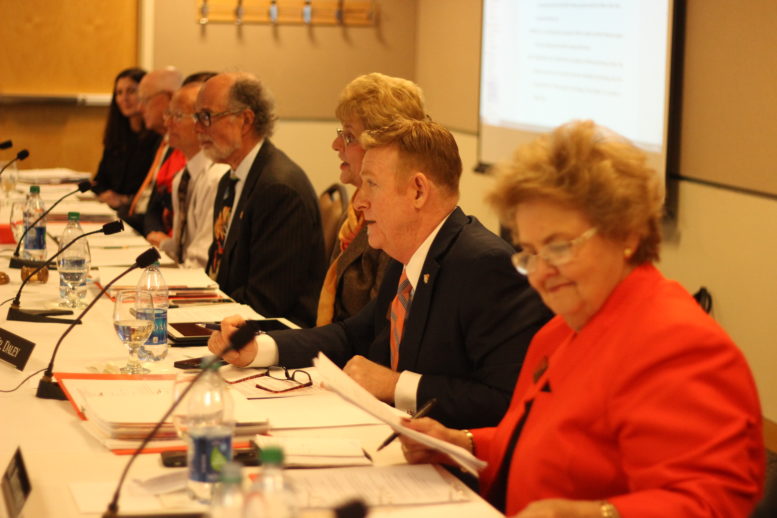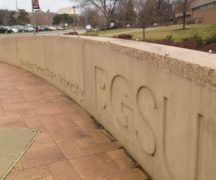By DAVID DUPONT
BG Independent News
Bowling Green State University is wants to keep students around long enough to graduate.
During Friday’s Board of Trustees meeting Provost Rodney Rodgers and Thomas Gibson, vice president for student affairs and vice provost, discussed the administration’s progress toward achieving its goal of retaining 80 percent of the fall, 2016 freshman class.
In spring, 91.5 percent of the students who started in fall were still at the university. That persistence rate, Rogers said, was down a little. But he wasn’t overly concerned.
Those students who stayed at the university had more academic achievement. They did better in the developmental math instruction provided in the Math Emporium and had higher grade point averages. Also, they tended to have lesser financial need, he said.
All those were signs that more of them will return for a second year at BGSU in the fall.
Still the university is going all it can to make sure students who start here continue.
That’s important not just for the university’s academic goals, but also for its bottom line. State funding is determined in large part by how many students end up getting degrees.
“I want to caution first that persistence rates are not strong indicators” of how many students are retained, Gibson said.
The university is looking at data across the board, he said, to determine what it needs to do to achieve its 80-percent retention goal.
Gibson said the university has adopted a couple strategies to keep students on campus.
He said they are monitoring the progress of students from groups that typically are at greater risk of dropping out – commuters, first–generation college students, students eligible for Pell grants, and students of color.
They are “intentionally engaging” with these students as soon as they show signs of trouble.
The university has also started a peer mentoring
The idea, Gibson said, is “to really engage with student to better understand how we might better help them.”
David Levey, who chairs the trustees, asked how many of the students who don’t return have financial problems.
Rogers said about 20-25 percent of students who leave before sophomore year fall into that category.
He said the university is “looking at students who have high academic success and high financial need.”
These students may benefit from gap scholarships that provide aid to help bridge the difference between the cost of attending and how much a student can afford to pay.
Levey said this send is message to the university’s foundation and its donors “that these gap scholarships help these students. The need is going to get greater in this crazy political environment.”
The trustees also approved the concept of a 15-week semester with a three-week January term, or intersession.
Rogers explained that the 15-week term will keep the university’s schedule aligned with the University of Toledo, which is switching this fall. BGSU is hoping to make the transition by fall, 2018, though Rogers admitted there was a lot of work to do before then.
The January term would offer students the chance to take courses to help them graduate on time or early. Also they could do research or travel. “This is really an opportunity to enhance their experience,” Rogers said.
They would not be required to do academic work during the term, Rogers said. “It would be opt-in.” He said at Miami, for example, about 30 percent of students participate in the intersession.
Trustees Richard Ross said he understood the value of an intersession from his own undergraduate days, however, he said he wanted more information on the financing before he voted for the new arrangement.
Rogers explained that if it was to be implemented in fall, 2018, the administration needed to start work now.
Levey said he was confident the administration would keep the trustees apprised of progress.
“It’s really up to the staff to develop final programs not the board,” he said. “We don’t want to have 13-legged horse running the operation.”





